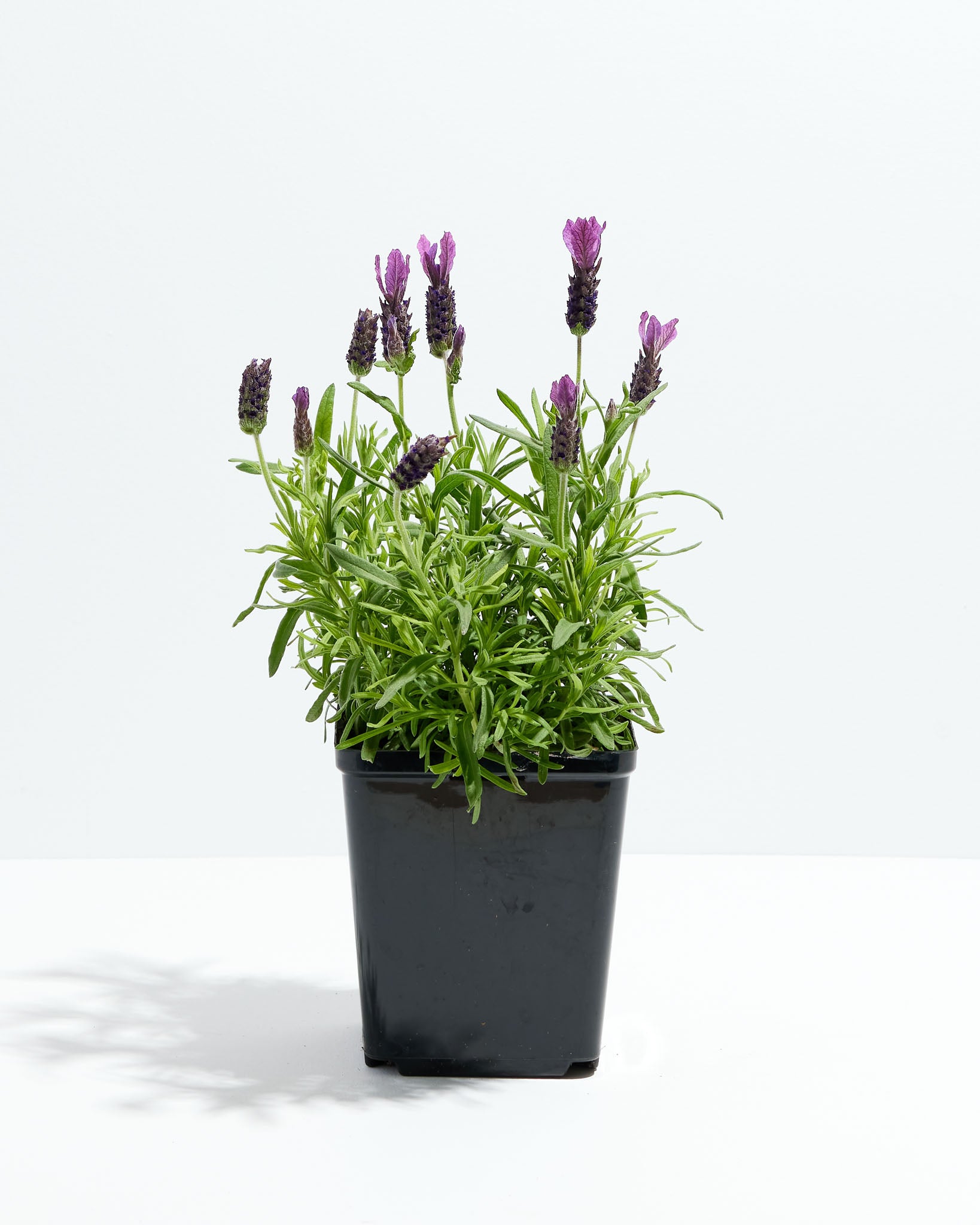

Lavandula stoechas 'Primavera' Care Guide

Plant lavender in full sun for best flowering.
Water deeply to 1 foot and let the soil dry out between waterings. In the winter, slow down the watering when the weather is mild.
This variety of lavender tolerates more humid climates.
Nights: 56°F to 64°F Days: 65°F to 76°F
This is a heat tolerant lavender in the deep south and may bloom all summer into fall.
Fertilize monthly during the growing season with a water-soluble organic mix around the plant's dripline (being careful not to touch the leaves).
To transplant into a garden bed, water your plant the night before. When planting your Lavender, ensure the soil is well-draining. Add soil amendments like compost or sand to lighten it. Check the soil pH and ensure it's between 6.7-7.3 (slightly alkaline). If you have acidic soil, add lime. Dig the hole twice as wide as the grower pot and the same depth (not deeper). Remove the Lavender and center in the hole. Add rooting hormone around the base of the roots. Water in the hole before covering with soil and let drain. Then add organic compost mixed with your native soil and fill around the plant and up to the top of its soil line. Tamp down with your hands to remove any air pockets. Water again around the drip line, then mulch up to the plant's drip line to help retain moisture. Keep her soil moist as she gets established. She will tolerate hot weather better than most and has long-lasting bloom time into the fall months in the south!
After the first flush of Lavender bloom has finished, cut the plant back by half to encourage more growth and flowers.
Stem cutting: When plants begin to bloom in the spring, prune 4-6 inch stem cuttings with no buds or bloom from the parent plant. Remove leaves on 1/3 of the bottom half of the stem with pruners. (Do not tear off.) Dip the ends in root hormone (mixed in water at a paste consistency) and place 1-2 inches down in damp, well-draining, moist potting soil mix and tamp down around the stem to secure it. Use a 2-3 inch container with drainage and is deep enough for the roots to grow. Mist inside a clear plastic bag to create moisture and humidity and place the bag over the top of the plantings loosely. There is no need to tie off the bag but allow a little airflow under and into the planting pot. Set it in bright, indirect sunlight while they are rooting. Check the moisture and humidity each day and add misting to the soil (not the leaves) while the roots establish. After 6-12 weeks, roots will begin to form. You can tug onto the stem to ensure the roots establish after new growth begins. Transplant to the garden after the roots are mature.


























